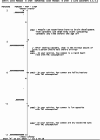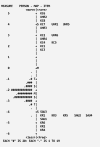Development of a cannabis health literacy questionnaire: preliminary validation using the Rasch model
- PMID: 40707888
- PMCID: PMC12288256
- DOI: 10.1186/s12889-025-23770-5
Development of a cannabis health literacy questionnaire: preliminary validation using the Rasch model
Abstract
Background: As cannabis becomes more integrated into Canadian society for medical and non-medical purposes, public health efforts have aimed to enhance public awareness and knowledge of the potential risks associated with cannabis use. However, no validated or established method to measure cannabis health literacy exists, limiting the ability to evaluate the impacts of public awareness initiatives. We aimed to develop and preliminarily validate a cannabis health literacy questionnaire (CHLQ) designed to measure an individual's knowledge, understanding and utilization of health and safety information related to cannabis.
Methods: The CHLQ was developed using existing health literacy domains and alcohol health literacy attributes as a framework. The questions were informed by extensive literature, item-response theory principles and input from stakeholders and people who use cannabis. The CHLQ includes four dimensions: knowledge of cannabis, knowledge of risks, understanding of associated risks and harms, and the ability to seek, access and use cannabis information. Adult participants were recruited through an online survey platform and social media. The questionnaire was refined and revised over three iterations using the Rasch analysis. Our preliminary validation process analyzed the CHLQ's reliability and construct validity examining separation reliability, item difficulty, item fit statistics and unidimensionality.
Results: A total of 1035 individuals across Canada completed our CHLQ. Each dimension of the CHLQ, had a well-distributed range of question difficulties. Across the four dimensions, item separation ranged from 9.93 to 17.29, and item reliability ranged from 0.99 to 1.00. Person separation ranged from 0.99 to 1.88, while person reliability ranged from 0.49 to 0.78. Most questions fit within the model, and unidimensionality was supported for all dimensions. Each dimension is scored separately with high scores indicating high knowledge or understanding for the respective domain. Raw scores for each dimension can be transformed to a linear Rasch score.
Conclusions: The CHLQ is a preliminary, multi-dimensional tool designed to measure cannabis health literacy for educational and research use. It demonstrates promising psychometric properties and provides an initial framework to inform public health efforts. Further validation in diverse population and settings is needed. The CHLQ provides foundation for future research, evaluation and public education efforts related to cannabis use.
Keywords: Cannabis education; Health literacy; Public health; Questionnaire; Rasch analysis.
© 2025. The Author(s).
Conflict of interest statement
Declarations. Ethics approval and consent to participate: This study was conducted in accordance with the Declaration of Helsinki. All participants provided informed consent digitally via Qualtrics. Before accessing the questionnaire, participants were presented with a digital informed consent form and asked to select ‘Yes’ or ‘No’ to participating in the study. Only participants consenting ‘Yes’ were included in this study. Ethical approval for this research was obtained from the Interdisciplinary Committee on Ethics in Human Research (ICEHR) at Memorial University of Newfoundland. This study is a subproject of a larger research initiative and, as such, received two ethics approvals (20230628-PH; 20230882-ME). Consent for publication: Not applicable. Competing interests: The authors declare no competing interests.
Figures







References
-
- Government of Canada. Consolidated federal laws of Canada, Cannabis Act [Internet]. 2023 [cited 2023 Oct 6]. Available from: https://laws-lois.justice.gc.ca/eng/acts/C-24.5/
-
- Health Canada. Cannabis Public Education Activities [Internet]. 2018 [cited 2023 May 26]. Available from: https://www.canada.ca/en/health-canada/news/2018/06/cannabis-public-educ...
-
- Adamson SJ, Kay-Lambkin FJ, Baker AL, Lewin TJ, Thornton L, Kelly BJ, et al. An improved brief measure of cannabis misuse: the Cannabis use disorders identification Test-Revised (CUDIT-R). Drug Alcohol Depend. 2010;110:137–43. - PubMed
-
- Bastiani L, Potente R, Scalese M, Siciliano V, Fortunato L, Molinaro S. Chapter 100 - The Cannabis Abuse Screening Test (CAST) and Its Applications. In: Preedy VR, editor. Handbook of Cannabis and Related Pathologies [Internet]. San Diego: Academic Press; 2017 [cited 2023 May 26]. pp. 971–80. Available from: https://www.sciencedirect.com/science/article/pii/B9780128007563001174
Publication types
MeSH terms
Grants and funding
LinkOut - more resources
Full Text Sources
Medical
Research Materials

